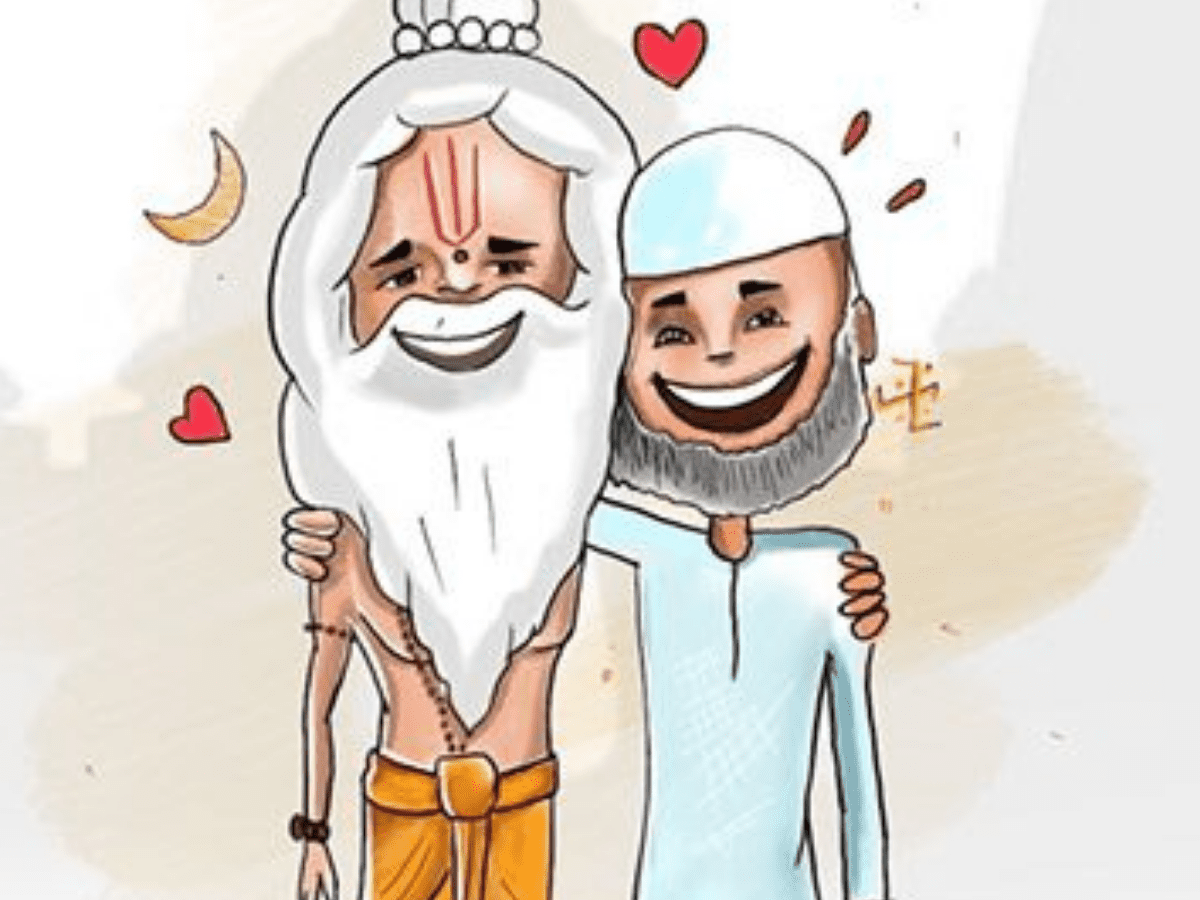
There are three tales of Communal harmony reported from three different parts of the country to suggest that the flag of secularism is flying high in the country and the idea of India based on interfaith unity is alive and kicking.
The first story is from Assam’s Sivasagar town where the Hindu and Muslim communities have erected a Durga Puja Pandal sharing boundary with a mosque giving a display of communal harmony. The second story is from Kolkata where Muslims have organized a Durga Puja celebration in their neighborhood to facilitate the Hindu community. The third story is from Muzaffarnagar district jail where over 200 Muslim inmates are observing the nine-day-long Navratri fast, along with their Hindu inmates.
In Assam’s Sivasagar town Durga Puja pandal is erected next to the old local Beparipatty Masjid. The celebration of Durga Puja is running in a friendly manner with the active cooperation of the Muslim community. When namaz is offered in the mosque, the loudspeakers in the Puja pandal are switched off. The Muslims have assured the administration that the Durga Puja celebration will not disturb the harmony between the two communities.
Locals residing in the area said that the festivities have become grander and more beautiful with the bond of brotherhood between Hindus and Muslims.
In Kolkata, a Puja Pandal is built in the Muslim-dominated area of Alimuddin Street just for two Hindu families who live there so that they may not go far distance for worship. The Muslim community with the help of a few Hindus has got the idol of Goddess Durga installed in their locality so that the Hindu families living there can perform pujas with proper rituals.
“We are very glad to see that this puja is being organized by the Muslim brethren for only two Hindu families” said Sayantan Sen, a local resident, of Alimuddin Street. He added, “this is a great example of love for mankind and teaches us that there should not be any difference between religious communities.”
The next story is from Muzaffarnagar district jail where over 200 Muslim inmates are observing the nine-day-long Navratri fast, along with other Hindu inmates.
According to Sitaram Sharma, Muzaffarnagar jail superintendent, of the 3,000 inmates, nearly 1100 Hindus and 218 Muslims are observing the Navratri fast.
The gesture of the Muslim inmates is a way to reciprocate their feelings for the Hindu inmates who had joined them in keeping ‘Roza’ in the month of Ramzan,” the superintendent explained.
The jail authorities have made some special arrangements in the canteen to keep the food demands of the fasting inmates.
These three stories of communal harmony suggest that composite culture and the unity of religions coexists in India even at a time there is a huge effort being made to rupture it.
It also suggests that people still value the virtues of communal harmony in our country. They believe that all have to live and coexist in the same cultural milieu and there are no other options than this.
The answer to peaceful coexistence is to love for fellow human beings and there is no alternative to it. Those spreading hatreds have no place in traditional Indian society.
